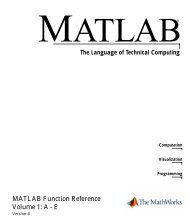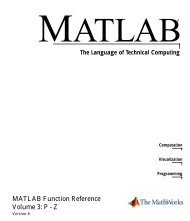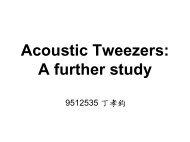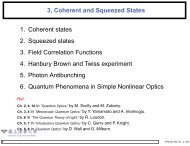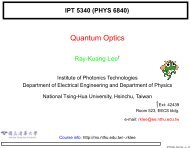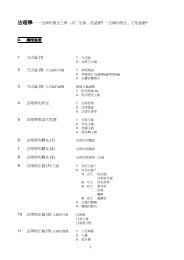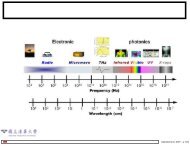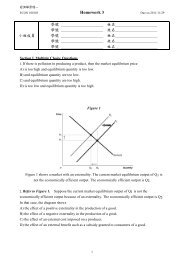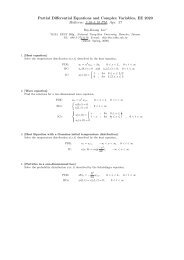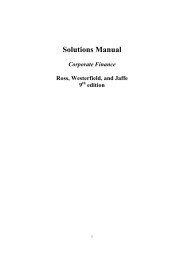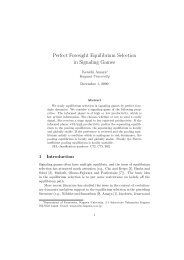Acceleration, Shock and Vibration Sensors
Acceleration, Shock and Vibration Sensors
Acceleration, Shock and Vibration Sensors
Create successful ePaper yourself
Turn your PDF publications into a flip-book with our unique Google optimized e-Paper software.
<strong>Acceleration</strong>, <strong>Shock</strong> <strong>and</strong> <strong>Vibration</strong> <strong>Sensors</strong><br />
One of the major benefits of capacitive accelerometers is to measure low level (less<br />
than 2 g’s), low frequency (down to dc) acceleration with the capability of withst<strong>and</strong>ing<br />
high shock levels, typically 5,000 g’s or greater. Some of the disadvantages of the<br />
capacitive accelerometer are a limited high frequency range, a relatively large phase<br />
shift <strong>and</strong> higher noise floor than a comparable piezoelectric device.<br />
Servo or (Force Balance) Accelerometers<br />
The accelerometers described to date have been all “open loop” accelerometers. The<br />
deflection of the seismic mass, proportional to acceleration, is measured directly using<br />
either piezoelectric, piezoresistive, or variable capacitance technology. Associated<br />
with this mass displacement is some small, but finite, error due to nonlinearities in the<br />
flexure. Servo accelerometers are “closed loop” devices. They keep internal deflection<br />
of the proof mass to an extreme minimum. The mass is maintained in a “balanced”<br />
mode virtually eliminating errors due to nonlinearities. The flexural system can be<br />
either linear or pendulous (C2 <strong>and</strong> C4 electrically represent opposite sides of the<br />
mechanical sensing element.) Electromagnetic forces, proportional to a feedback<br />
current, maintain the mass in a null position. As the mass attempts to move, a capacitive<br />
sensor typically detects its motion. A servo circuit derives an error signal from<br />
this capacitive sensor <strong>and</strong> sends a current through a coil, generating a torque proportional<br />
to acceleration, keeping the mass in a capture or null mode. Servo or “closed<br />
loop” accelerometers can cost up to ten<br />
times what “open loop accelerometers”<br />
cost. They are usually found in ranges<br />
of less than 50 g, <strong>and</strong> their accuracy is<br />
great enough to enable them to be used<br />
in guidance <strong>and</strong> navigation systems. For<br />
navigation, three axes of servo accelerometers<br />
are typically combined with three<br />
axes of rate gyros in a thermally-stabilized,<br />
mechanically-isolated package as<br />
an inertial measuring unit (IMU). This<br />
IMU enables determination of the 6-degrees<br />
of freedom necessary to navigate in<br />
space. Figure 5.2.16 illustrates the operating<br />
principal of a servo accelerometer.<br />
They measure frequencies to dc (0 Hertz)<br />
<strong>and</strong> are not usually sought after for their<br />
high frequency response.<br />
149<br />
Figure 5.2.16:<br />
Typical servo accelerometer construction.



